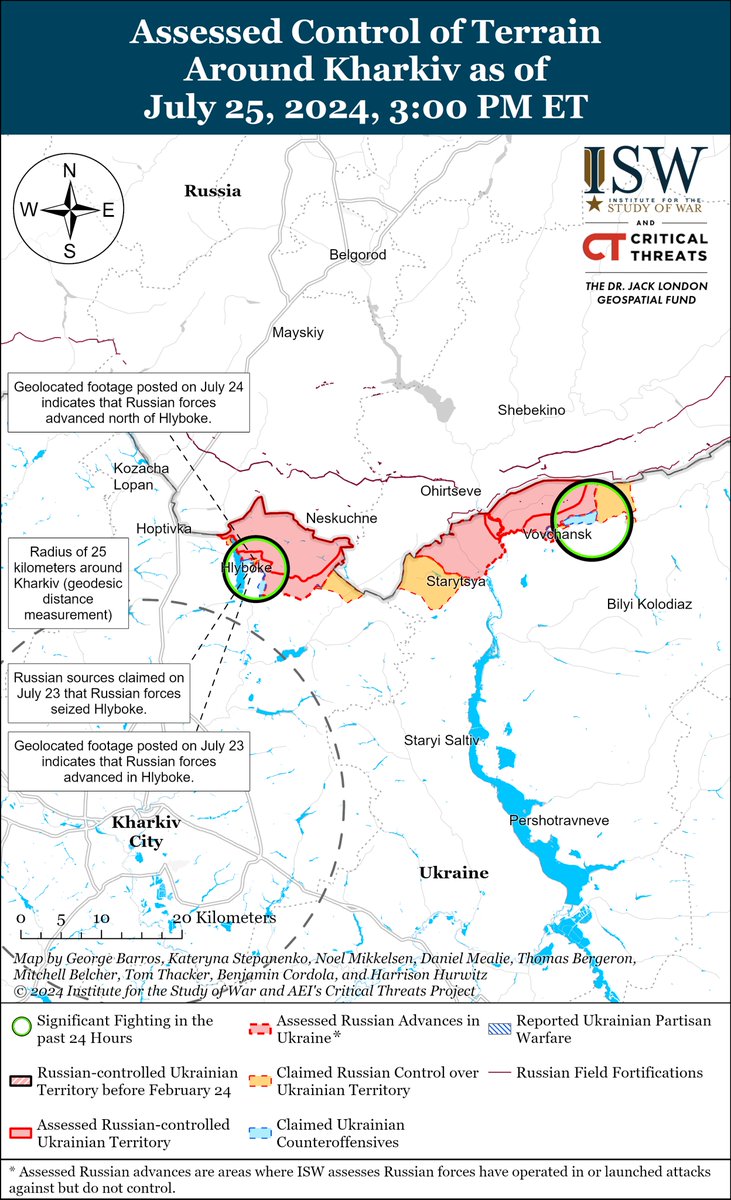.@criticalthreats and ISW are considering two possible Hezbollah courses of action after the IDF strike that likely killed Fuad Shukr:
1. Hezbollah may decide to respond with a major rocket and drone barrage on northern Israel that resembles previous Hezbollah attacks in retaliation for previous IDF strikes on senior commanders.
🧵(1/7)
1. Hezbollah may decide to respond with a major rocket and drone barrage on northern Israel that resembles previous Hezbollah attacks in retaliation for previous IDF strikes on senior commanders.
🧵(1/7)

2/ Hezbollah has previously responded by launching salvoes of 100+ rockets targeting IDF bases in northern Israel and the Golan Heights.
3/ Hezbollah could attempt to build a strike package that it calibrates to avoid a strong Israeli response, thereby allowing tensions on the border to diffuse and return to the standard tit-for-tat attacks.
4/ Hezbollah’s strike package would presumably be larger and strike deeper into Israel than past retaliatory attacks given Shukr’s seniority, however.
5/ Israeli sources said immediately after the strike targeting Shukr that this would be the extent of Israel’s response to the Majdal Shams rocket attack, and that further escalation is dependent on Hezbollah's response.
6/ Hezbollah officials messaged on July 29 that Hezbollah did not want an all-out war, suggesting that Hezbollah will temper its response to deescalate the situation.
7/ There remains the risk that even a carefully calculated strike package would unintentionally strike a sensitive target in Israel and prompt further escalation.
Full update: isw.pub/IranUpdate0730…

Full update: isw.pub/IranUpdate0730…

• • •
Missing some Tweet in this thread? You can try to
force a refresh


























